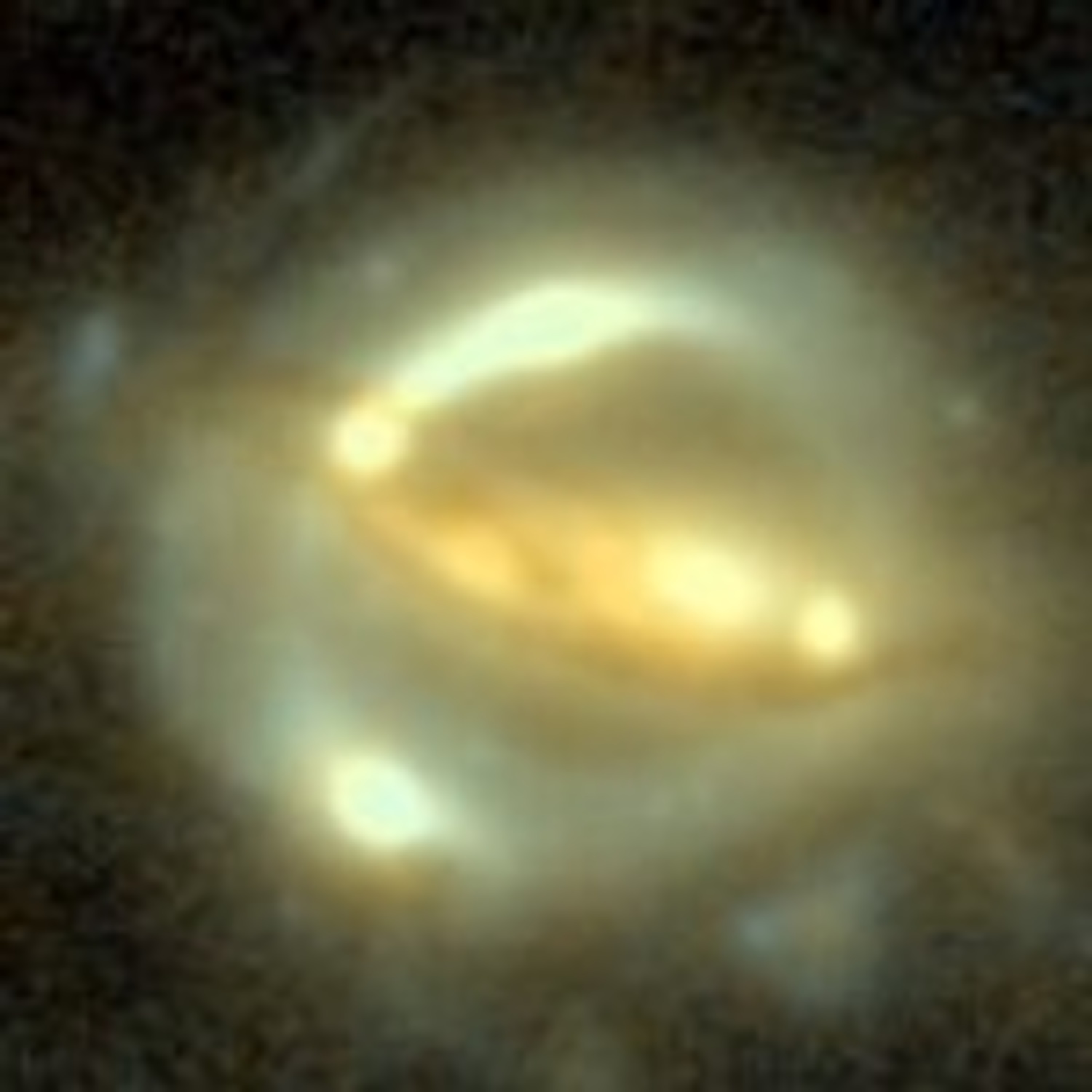Science News
Gravitational Lensing
March 2, 2010

Exciting news out of Stanford this week. Researchers are able to measure the size and age of distant galaxies through a technique called gravitational lensing.
Here’s how it works: When a large nearby object, such as a galaxy, blocks a distant object, such as another galaxy, gravity from the nearby object causes light to detour around it. But instead of taking a single path, light bends around the object sometimes doubling, sometimes quadrupling, sometimes creating an entire ring of light around the nearby galaxy.
Astrophysicist Phil Marshall explains it quite well using a birthday candle and wine glass stem here.
Using the Hubble Space Telescope and WMAP data, the Stanford team could measure the distances light traveled from a bright, active galaxy to the earth along different paths. For example, if the light quadrupled around the nearby object, the scientists could measure it four times, along four separate paths.
Marshall likens it to four cars taking four different routes between places on opposite sides of a large city, such as Stanford University to Lick Observatory, through or around San Jose. And like automobiles facing traffic snarls, light can encounter delays, too.
By understanding the time it took to travel along each path and the effective speeds involved, researchers could infer not just how far away the galaxy lies but also the overall scale of the universe and some details of its expansion.
Using light bent by gravity, astronomers can measure the Universe—a yardstick billions of light years in length!